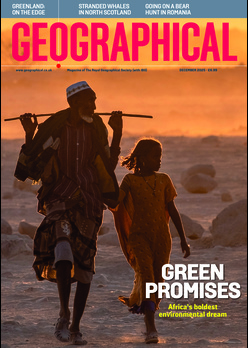
Discover the ten nations responsible for the greatest outflow of plastic waste that ends up on beaches from around the world
By
Each year, 11 million tonnes of plastic enter the ocean – equivalent to dumping 2,000 garbage trucks full of plastic into the world’s oceans every single day.
But it’s not just plastic disposal that can wreak havoc upon the planet. The very act of producing plastic is harmful to both the environment and countless species. Relying mostly on fossil fuels to be made, its production emits polluting greenhouse gases into the atmosphere, including known carcinogens.
Enjoying this article? Check out our related reads…
Just seven countries are responsible for 66 per cent of global plastic production. China, the US and Saudi Arabia are the largest producers, together making more than half of the world’s total supply of plastics. And as of 2021, 18 companies are estimated to be responsible for more than half of global polymer production.
Such vast swathes of plastic are often improperly disposed of, resulting in the 5.25 trillion pieces of macro and microplastic found in oceans across the globe today. This marine plastic pollution is estimated to have an economic cost of between $6–19 billion.
Although plastic pollution is a global issue, there are several hotspots where plastic waste originates from. Read on to find out the countries responsible for the highest cumulative leakage of mismanaged plastic waste that escaped and washed up on other countries’ beaches from 2010 to 2019.
10) Malaysia – 332,756 tonnes
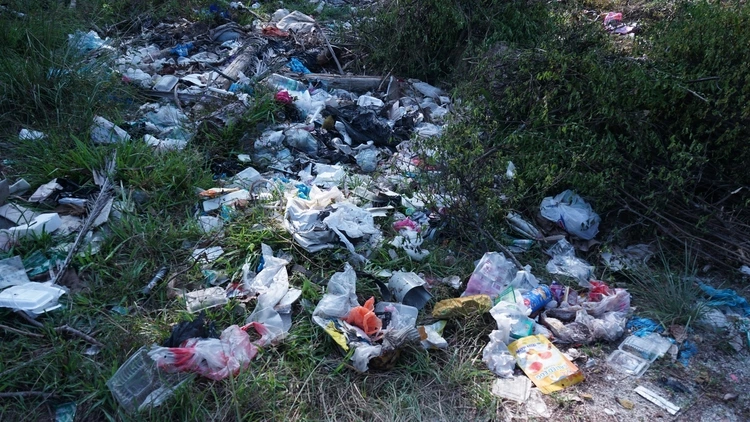
Currently, around 1,300 plastic manufacturers operate in Malaysia, with plastic production experiencing the highest growth rates out of all industries for more than two decades.
However, plastic waste is poorly managed in the country. One study estimates Malaysia has generated a total of 0.94 million tonnes of mismanaged plastic waste, of which between 0.14 and 0.37 million tonnes may have leaked into the marine environment. This occurs in three ways: firstly, plastic waste can escape from waste bins and wash into drains, before being transported into waterways. Secondly, plastic litter can be blown across land and directly into waterways, or it can be directly dumped into rivers.
In its capital, Kuala Lumpur, 35 per cent of plastic waste is plastic bags, 19 per cent is plastic bottles, 15 per cent is plastic film, and 12 per cent is single-use food service plastics.
The Malaysian government is attempting to tackle this issue by forming a national roadmap phasing out single-use plastics by 2030. Enforcement actions are also in place for traders who still use conventional plastic bags as opposed to their biodegradable counterparts.
9) Thailand – 338,685 tonnes
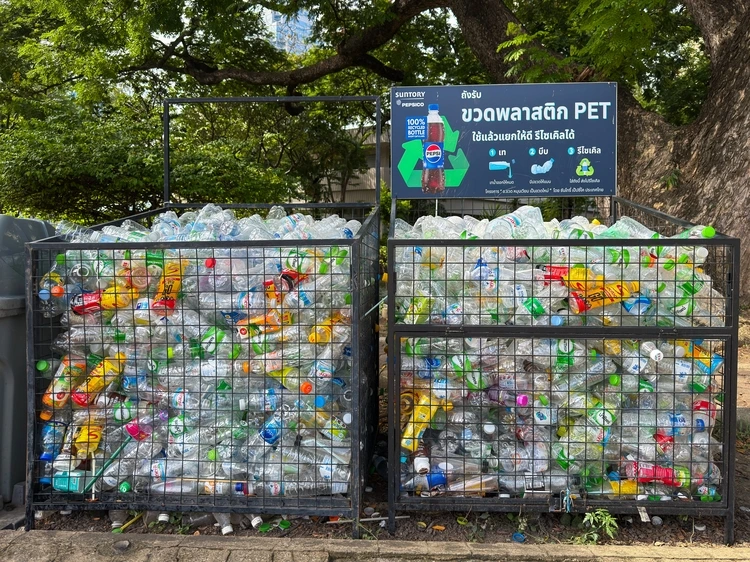
Each year, Thailand loses up to $4 billion from plastics being discarded as opposed to being recycled into other valuable materials. At least 50,000 tonnes of uncollected plastic waste in Thailand end up in the oceans annually.
The Chao Phraya River in Thailand, the nation’s largest, is also one of the world’s most polluted waterways. It transports around four million kilograms of plastic each year through its waters.
Recently, the nation banned plastic waste imports, a significant change from its previous status as a ‘dumping ground’ for foreign nations’ trash. After China imposed a similar ban, Thailand received a huge influx of trash – more than 552 million metric tons in a single year.
Despite this ban, Thailand still remains one of the biggest plastic polluters in the world, generating around two million tonnes of plastic per year. Just 25 per cent of this waste is recycled.
8) Turkiyë – 354,441 tonnes

When China enforced a ban on plastic waste imports, Turkiyë followed as Europe’s recycling hotspot. Within less than a year, more than 200,000 tonnes of plastic waste that would have ended up in south-eastern China instead headed to south-eastern Turkey, the equivalent of one full garbage truck every six minutes.
Although plastic is sent to Turkiyë with the aim of being recycled, a lot of it is too dirty to convert into other products or incinerate as fuel. Instead, this plastic is burned, where it will form microplastics that can harm habitats and ecosystems.
7) Vietnam – 484,457 tonnes

Poor national waste management in Vietnam means that waste is often treated by open dumping or burning, with a small fraction collected for recycling. Such methods lead to both air pollution and increased marine litter.
Vast amounts of plastic are used in Vietnam in fish farming. In total, 91,000 – 107,000 tonnes of plastic are used every year in intensive white-leg shrimp farming.
To help combat Vietnam’s plastic pollution into oceans, the organisation WasteAid set up an 120 people-strong volunteer group to litter pick on Vung Tau Beach. Despite the beach seeming relatively waste-free, more than two tonnes of waste were found buried in the sand and collected by the volunteers in just a few hours.
6) Nigeria – 496,841 tonnes
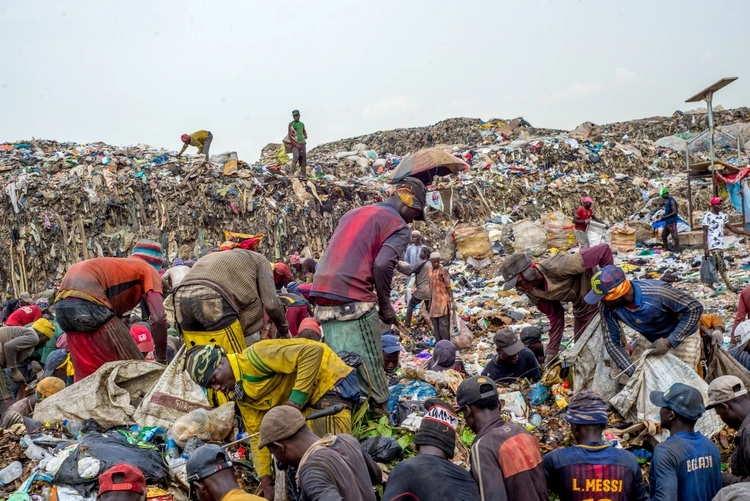
Nigeria ranks among the world’s top plastic polluters for several reasons – from inadequate waste management systems to a huge increase in plastic imports from other nations.
Most plastic waste in Nigeria is either burned, dumped in the ocean or thrown into bodies of water.
Earlier this year, Nigeria announced plans to introduce a series of regulations making companies that produce and use plastic packaging responsible for countering pollution.
This makes the nation one of a growing number of countries embracing legislation known as extended producer responsibility. Such regulations would require companies that produce, import, distribute or sell plastic packaging to fund ‘producer responsibility organisations’. These non-profit entities would then be responsible for reducing pollution from packaging, which is the source of 63 per cent of all pollution in Nigeria.
5) Indonesia – 599,020 tonnes

Indonesia has more than 4,000 rivers, but many of them are among the most polluted in the world. A significant proportion of Indonesia’s marine plastic pollution is fishing gear, such as anchored gillnets, trammel nets and plastic pots. Without adequate action, this can lead to ‘ghost fishing’, where old or discarded fishing gear traps marine animals.
Using drones and artificial intelligence, one study found that at least half of plastic items along riverbanks are single-use plastics, such as cup lids, caps and small plastic items.
To combat such waste, experts say targeting single-use plastics with restrictions and fees could be a viable solution. Other actions taken include prohibiting the dumping of waste in rivers, as well as organising regular cleanup activities.
4) Brazil – 639,665 tonnes

Each year, Brazil produces around 500 billion single-use plastic items, of which 87 per cent are packaging and 13 per cent are disposable utensils such as cutlery and bags. Much of this plastic ends up in the oceans. For example, at the bottom of Paranaguá Bay, scientists discovered degraded vehicle tyre waste, while in São Paulo, more fibres associated with synthetic clothes are found in waters thanks to inefficient sewage treatment.
Despite high levels of plastic production, waste management systems remain poor in the country. Rates of solid waste and plastic waste are around four per cent and one per cent, respectively.
Brazil has joined other nations like Vietnam to impose a ban on solid waste imports and residues into the country, including paper, glass, plastic and metal.
3) India – 966,447 tonnes

An estimated 60 per cent of India’s plastic waste ends up in rivers and coastal waters. The Ganges is among the most polluted, contributing around 10,050 tonnes of plastic to the Indian Ocean each year.
The world’s largest mangrove forest, the Sundarbans, also faces an influx of around 40,000 tonnes of plastic annually from urban cities. This vast swathe of plastic can disrupt breeding grounds for fish, shrimp and crab, reducing the total catch by as much as 15 per cent in recent years.
A recent study conducted by the Indian Institute of Technology found that 12 out of every 20 fish species in Indian waters contained microplastics.
Despite such significant plastic pollution, India is taking steps to reduce its total plastic waste. In 2022, the nation banned single-use plastics, targeting 10 billion units of waste annually. In many rivers, India has also installed trash booms – floating barriers – that have intercepted more than 100 tonnes of waste in just six months, preventing debris from reaching the Bay of Bengal.
2) Philippines – 1,695,260 tonnes
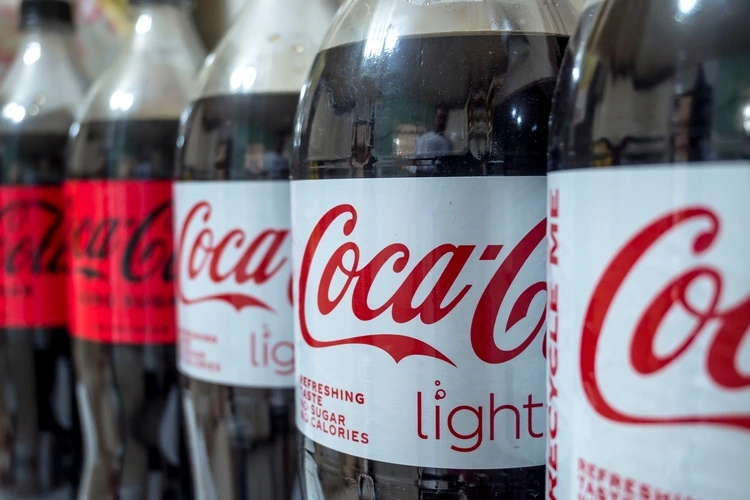
Back in 2019, the Philippines was responsible for almost 40 per cent of global oceanic waste. Seven of the top ten plastic-polluted rivers are in the Philippines.
One reason for the nation’s huge plastic consumption is a tendency for Filipino consumers to buy products in small quantities. For example, rather than buying one plastic bottle of shampoo, many individuals instead buy several smaller individual sachets, priced more attractively. More than 164 million sachets, 48 million shopping bags and 45 million thin plastic film bags are used daily in the nation. So widespread is this behaviour – fuelled by many individuals in the Philippines living below the poverty line – that it has a name: the sachet economy.
To combat its plastic pollution, experts call for governments to increase accessibility to proper disposal facilities. As well as this, adopting a circular economy approach – focusing on reducing waste through sustainable production and consumption – could drive down total plastic waste.
1) China – 2,683,631 tonnes

The world’s largest producer of plastic is China, which also takes top spot as the nation with the greatest quantity of plastic waste entering the world’s oceans. In 2020 alone, China produced around 60 million tonnes of plastic waste, but just 16 million tonnes was recycled.
The nation is home to the longest river in Asia, and the third-longest in the world – the Yangtze. One study found the river was responsible for more than half of all marine plastic pollution.
One reason for the country’s huge plastic waste issue is the rapid rise of e-commerce and delivery services, both of which result in mounting plastic packaging. Because of this, the nation has set out a detailed roadmap to phase out single-use plastic, as well as enforcing targets to reduce plastic waste in landfills and increasing the capacity of waste incineration sites.

